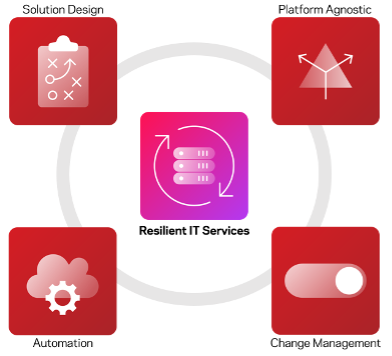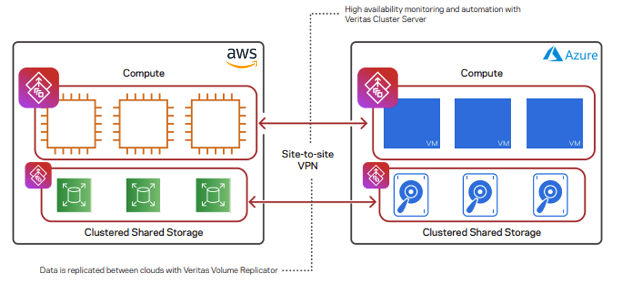Understanding Resiliency in the Public Cloud

Are you running business critical applications in the cloud? How do you ensure that your business technology is highly available and performs as required when running in the cloud?
Cloud-native applications serve the same purpose as applications running in your own on-premises data centers. And just as you would design and architect your applications to be highly available in your own on-premises data center, you need to do the same thing in the cloud. Applications running in the cloud are not automatically highly available or scalable simply because they’re running in the cloud. Some cloud provider services help make it easier to implement both availability and scalability for your applications, but your applications will not be highly available or scalable by default when running in the public cloud – you still need to architect and implement this functionality yourself. The cloud provider shared responsibility model basically says: ensuring your applications are online and working properly is up to you.
How Clouds Provide Resiliency
Cloud vendors have several ways of providing fault-tolerance for the services they offer. To ensure that your business-critical applications are highly available in the cloud, it’s important to understand how cloud service providers manage fault-tolerance and how cloud services can fail. Here’s a quick overview of what cloud providers deliver as part of the shared responsibility model:
Shared responsibility in the cloud |
Cloud Provider |
You |
Responsible for delivering services with integrated resiliency and fault tolerance to protect against failures |
Responsible for managing your applications, ensuring that they’re highly available and protected against failure |
Having a clear understanding of what cloud providers deliver and the ways that they can potentially fail is key when architecting your IT services for maximum availability and resiliency. At a high level, failures in cloud environments are the result of the same or similar failures in an on-premises data center: infrastructure (hardware, network, facility) and software (management and data plane) failures. Any type of failure can result in your application going down. And it’s worth noting that a failure of any one of these components may have enough of an effect on your application to require a failover or workaround be put in place. It doesn’t necessarily take a widespread cloud provider outage to result in downtime or degraded performance for your application running in the cloud.
Most cloud provider IaaS offerings have options available to help embed some level of resiliency into your cloud environments:
- Infrastructure that can be deployed in a zone and region model – which helps protect it from localized failures
- Monitoring services that can alert you of failures and can help understand when systems and services may be degraded
However, the main thing to understand with cloud IaaS offerings is that availability and resiliency for applications running in the cloud falls squarely on the end user.
Availability and Resiliency for your Cloud Applications
Architecting your cloud applications to be highly available and resilient involves several factors that need to be considered. Some key things to keep in mind:
- Have a clear understanding of much downtime you can afford
- Focus on the business service your application is delivering and design a highly available solution that meets your minimum business requirements if the primary (active) application goes down
- Look for a solution that has visibility and remediation capability for cloud services with the highest probability of failure (such as network or compute instance failures)
- Validate your resiliency strategy by regularly testing applications and systems in your secondary environment
- Automating high availability and DR operations can significantly improve application uptime and overall operational efficiency
While there are several things that need to be considered when designing resilient systems in the cloud, there are 4 focus areas that often stand out.

Figure 1. Focus areas for resilient IT services
Most of these focus areas rely on having the right tools and solutions in place, as they represent concepts and/or functionality not typically available or included with cloud provider IaaS offerings. This is where solution providers like Veritas can help.
Veritas Alta™ Application Resiliency
With application management being left to the end user, it is critical to have a proven enterprise-grade solution to manage application uptime in the cloud. Veritas Alta Application Resiliency is designed to manage cloud infrastructure and applications running in the cloud and can help you keep your applications ‘always-on’. Veritas Alta Application Resiliency provides:
- Application High Availability – Veritas Alta Application Resiliency enables failover for your IT services to other zones or regions within a cloud service, or to other cloud providers and on-premises datacenters
- Application Resiliency – achieve a near-zero RT0/RPO for your applications in the cloud. Veritas Alta Application Resiliency protects your data from hardware and software failures in the underlying cloud infrastructure
- Shared Storage – easily configure high performance shared storage in cloud networks using cloud-native block storage services. Shared storage clusters provide parallel access to application data and can be configured to span cloud provider zones to minimize the impact of cloud outages
Veritas Alta Application Resiliency also has a Virtual Business Service (VBS) feature that enables you to manage multi-tier applications as single consolidated entities. Using VBS, you can completely automate the recovery or migration of a complex multi-tier IT service running in the cloud – which helps simplify operations and eliminate downtime.

Figure 2. Veritas Alta Application Resiliency makes your cloud applications highly available
Summary
Understanding cloud resiliency and how cloud services can fail is key when you’re looking at running your business-critical applications in the cloud. Having the right tools and solutions will help you ensure that you’re IT services are delivering the smoothest possible experience for your end users. Veritas works with cloud providers to make this happen and has a proven track record of delivering solutions that keep your applications ‘always-on’.
